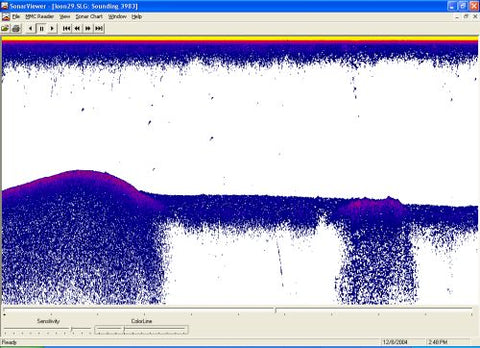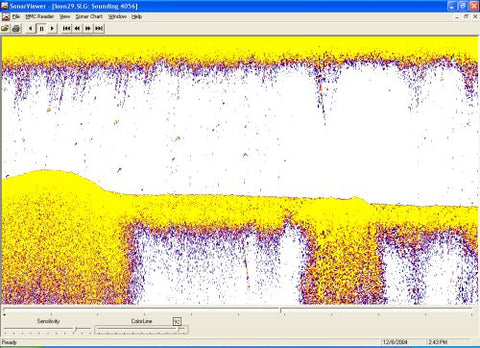Adjusting Lowrance ColorLine On July 26, 2013
By: " Doc" Bruce Samson
I get many questions about adjusting the color lines on sonar. The correct setting depends on your preferences and sonar model you are using. ColorLine was developed to show differences in the strength of echo returns. By adjusting the color lines on sonar, we can tell differences in bottom hardness and determine if the bump on the bottom is a fish or the bottom. I have a nice example HERE showing fish as bumps on the bottom. ColorLine is the same as GrayLine except it has shades of color instead of black and white shades. Adjusting the color lines on sonar is a needed skill for fishing. If we adjust it too high or low we can’t interpret the information. I find walleyes like to relate to bottom structural differences. One example would be at the edge of a transition from sand to mud. The following examples are showing a soft bottom next to a hard bottom. The more yellow color you see means more echo returns but is dependent on the setting of the ColorLine. Think of the setting like the volume knob on a radio. Increase the volume is like amplifying the displayed colors. I have shown how I like to see the display for my preferences. The pictures come from charts I have recorded. If you use Lowrance products, they have a log chart function that saves the chart as digital data that can be replayed on the SonarViewer which is free software. You can download the SonarViewer from www.lowrance.com. I record chart data and play with the settings in the SonarViewer to learn what settings work for me.
Example 1 - Too Low Colorline
Example 2 - Optimal Colorline

Example 3 - High Colorline









